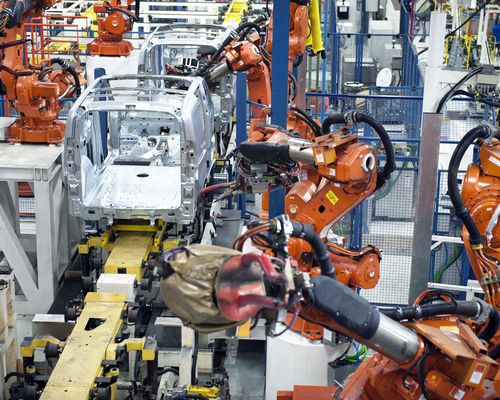ITEA’s digital outlook
On the sidelines of Co-Summit 2015, Portal sat down with Rudolf Haggenmüller, chairman of ITEA, to discuss accomplishments, international co-operation, Horizon 2020 and the cluster’s relationship with the European Commission.
ITEA 3 is the EUREKA Cluster supporting innovative, industrydriven, pre-competitive R&D projects in the area of software-intensive systems and services (SiSS). SiSS are a key driver of innovation in Europe’s most competitive industries, such as automotive, communications, healthcare and aerospace. ITEA supports disruptive projects involving influential industrial players from across the world, notably private firms, SMEs, universities, research institutes and user organisations.

ITEA ultimately seeks to harness the benefits of digital technology to tackle the major challenges facing society, both at home and in the workplace. The platform, now in its third form, builds upon its proven track record established in ITEA 1 and ITEA 2 and offers a “more dynamic approach” to SiSS innovation.
There is a wide consensus that from now until 2030, change and disruption will be permanent features of society, with the way of living and doing business becoming fundamentally different. Digital technology is expected to play a major role in mastering such changes, and it is within this domain that ITEA is addressing innovation in software, IT services, internal IT and embedded software. According to ITEA, for Europe, an industry strong in software innovation is a prerequisite for maintaining global competitiveness and securing high-value jobs in digital technology, as well as supporting traditional industries.
ITEA’s mission is therefore to be the recognised partner for European industry, optimising support for companies and R&D actors active in projects in the area of SiSS. The EUREKA Cluster also aims to make the best use of funding made available by countries supporting ITEA projects. Consequently, following the EUREKA structure, each ITEA project partner can apply for national funding in their own country, allowing a venture to attract financing from all participating countries.
European partnerships
The organisation has also built strong ties with other EUREKA clusters, for example CATRENE (Cluster for Application and Technology Research in Europe on NanoElectronics), Celtic- Plus (which focuses on the future of telecommunications and developing a smart, connected world), and EURIPIDES² (European Smart Electronic Systems). Furthermore, there is a deep level of co-operation with the ARTEMIS Industry Association on embedded and cyber-physical systems.

The seventh Co-summit took place in the German capital Berlin in March, focusing on ‘Smart industry: impact of software innovation’, otherwise known as ‘Industrie 4.0’. The twoday conference, attended by Portal, saw a diversity of projects, presentations and discussions demonstrating the central and crucial role played by ITEA and ARTEMIS projects in the creation of new, smart manufacturing and processing.
During the conference, Portal sat down with ITEA chairman Rudolf Haggenmüller, who discussed developing ties with the European Commission, balancing the benefits of private companies and closer industrial collaboration, and creating a digital ITEA.
What have been the main successes of ITEA 3 during the last year?
Last year we began ITEA 3, which has so far been very successful. We have held promotional campaigns on the new form across Europe, particularly in Germany but also in Sweden, Finland, Turkey and Austria. Furthermore, we have also actively taken part in events happening in the Republic of Korea and France, and consequently have built a very stable relationship with these countries and the public authorities regarding ITEA 3.
What can other associations and platforms learn from ITEA in regards to greater international co-operation?
It is important to help make the platforms successful – a relationship must be working in both directions. We have found that it has always been good to be in contact with a national research agency – after all, they provide the funding – but it is equally important to establish trust with local companies. We have also found it is useful to have visits and hold workshops to explain how successful projects developed. It is important to give advice, even in the project generation phase, and encourage possible participants to enter one of the project consortia; we hope that consortia will be stable and have successful outcomes.
To give a concrete example, one of Canada’s first participations in an ITEA project is in the project known as ‘Medolution’ (medical care evolution), which focuses on building upon the success story of medical imaging and receiving Big Data from consumers. This project really is an evolution in medical treatment, and we are assured by the participants that this project will be a success. We have recommended this project, and others, to Canada and have encouraged their participation. The project is yet to start, but it gives me a very good feeling.
In June, we will again travel to Canada and we will be pulling together a small group of companies to participate in our Project Outline Preparation Days in Brussels in September. During these events I will draw attention to Medolution, and the Canadian partner, Norima Consulting Inc. of Winnipeg, Manitoba, will be able to inform its colleagues on how the venture works and about the various practicalities.
How important is it to engage the European Commission in ITEA?
According to the Commission, ITEA 3 is very important to the EU institution. Khalil Rouhana, director of Components and Systems, DG CONNECT, informed me that he is pushing for a balanced software and electronics innovation and therefore it is important to partner with ITEA 3.
Whilst we welcome a closer relationship, ITEA, as a fully industry-driven EUREKA Cluster, is not part of the Commission. The Commission has been a good friend, and we should take care to maintain the flexibility and complementarity that we currently have in the relationship.
To what extent is there a need for an industry-led approach to collaboration, rather than one that is driven by the EU?
There is no need for any one particular approach, but rather flexibility. EUREKA can be a frontrunner to experiments and it would be damaging to lose this flexibility. Furthermore, EUREKA has proven that it has a successful bottom-up approach to innovation and research, despite having a relatively small level of funding available. However, this funding can be used in the most flexible way possible, wherever industrial partners feel it is important to invest money; with EUREKA, this goal can be achieved.
One example of this industrial-led approach to research collaboration is the ‘Massive Online Open Course Tablet’ (MOOC TAB) project. This includes 12 partners from France and Turkey and focuses on Cloud-based composition, distribution and usage of training content in an open educational online course on tablet computers. This has been running since January, and it would never have happened in a top-down approach to research. There was not a long discussion at the beginning of the project, because it was obvious that we needed such a development.
How do you balance the interests of individual private companies and encouraging closer collaboration?
This can be best illustrated by two extreme examples initiated by Daimler. In the ‘From System Modelling to S/W running on the Vehicle’ project, or MODELISAR, Daimler announced it wanted to create a ‘global standard’. The project, which ran from 2008-2011, saw Daimler state: ‘We can now simulate every part of a car, but the question whether parts fit together has no answer. We want to have a functional mockup interface (FMI).’ Such a breakthrough, a standard FMI, is now used by Toyota and Volkswagen, amongst others – essentially everybody, as there is no competition.
The other extreme example is AVANTI, which is focused on speeding up production processes and is based on simulation. Half of experts believe that production can be virtually simulated and run under the control of the system – they can play with commissioning, how quickly they can put in some components, and how they can let it go to the assembly line. Of course, the partners in the project want to gain a competitive advantage for at least a certain period of time.
How are you promoting the benefits of working with ITEA to potential new collaborators?
Every ITEA project has a concrete impact and fast exploitation, with part of the results entering the market during the project’s lifetime. Of course, after the project has been completed, the story continues, but fast exploitation is the key element of ITEA’s success. We have understood how to create major new developments in the SiSS sector and such ambitions make ITEA unique; it is a business success for the participating countries and companies.
What are the main goals of ITEA 3 in 2015?
Whilst we will never set priorities at a project level, we want to be accepted and recognised as a worldwide leader in software innovation – this is a big challenge and we are working towards it. We want to make our international customer and end user workshop series a real working instrument to create consortia in advance of project generation, for example in smart cities.

Our biggest challenge for the coming year will be to understand what the nature of digital ITEA is. We are telling the whole world that the future is global and digital, and, whilst we have some understanding of how to become global, we need to understand what becoming digital means. Until now, ITEA has been a fully analogue undertaking.
ITEA has a collective workforce of about 3,000 people, and we generate around 70 ideas a year. A digital ITEA will have a workforce of around three million people worldwide, with experts in our main domains. We are now talking about 70,000 ideas in a truly digital world. We need to understand how to organise and finance a digital ITEA, and at the closing ceremony of Co-summit 2015, I will give the ITEA community this task.
Next year we will discuss digital ITEA in further detail, but three years from now, we must understand and have an opinion on how to manage, organise and finance a digital ITEA. This is our great future.
Rudolf Haggenmüller
Chairman, ITEA




